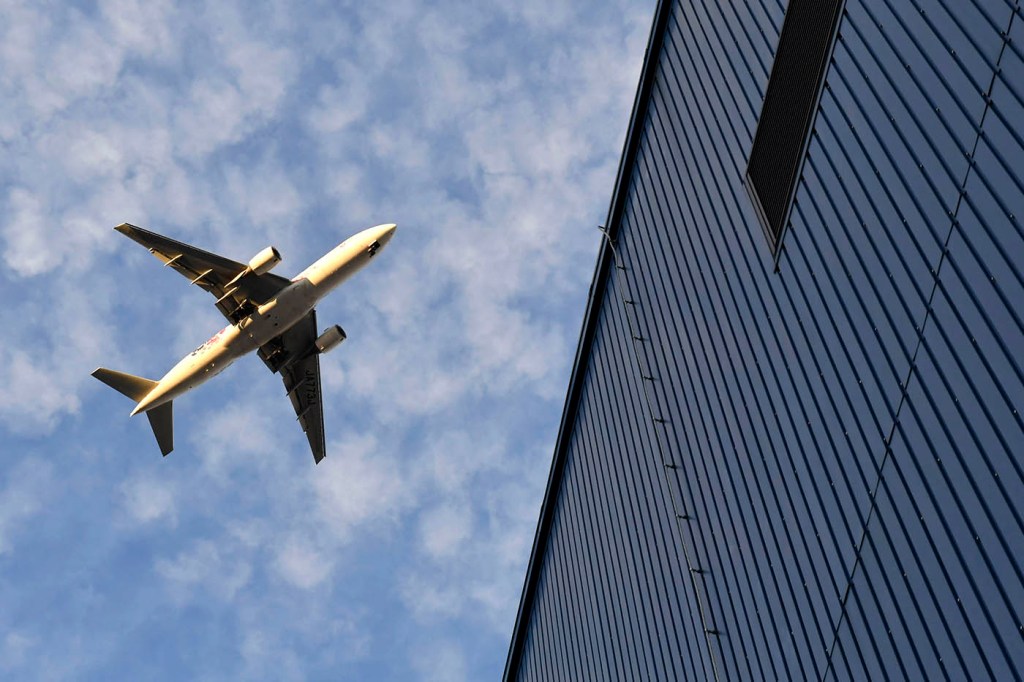Airlines will bounce back. How long that will take is up in the air.

Airlines continue to face turbulence this week amid increasing event and flight cancellations—and now President Trump’s decision to ban most travel from Europe—spurred by the growing spread of the COVID-19 pandemic. It will take some time for airlines to bounce back, says Northeastern professor Ravi Sarathy, who studies the airline industry. But the effect on their bottom line—and the economy—will not be cataclysmic.

Ravi Sarathy is a professor of international business and strategy at the D’Amore-McKim School of Business. Photo courtesy of Ravi Sarathy
The International Air Transport Association said last week that the outbreak will cost the airline industry $63 billion to $113 billion in lost revenue this year.
“My gut feel is the impact on the economy is unlikely to last more than two financial reporting quarters, so we’re talking about six months, with the bulk of negative effects in the April to June quarter and the July to September quarters,” says Sarathy, a professor of international business and strategy. “By then I think the impact should be dying out and business should start being able to pick up its travel.”
In the interim, it might be easier for leisure travelers to find bargain flight deals, says Sarathy, although those seeking affordable flights for a last-minute escapade shouldn’t rejoice too much. A decline in air travel demand has prompted several airlines to cut back on international and domestic service, so fares might not come down too much, he says.
“And one reason people are not flying is partly fear of contagion, so lower fares may not overcome that fear,” says Sarathy.
Sarathy adds that lower fuel costs could also help sustain margins to some extent even if fares fall due to oil prices falling precipitously in recent days. And, he predicts that once the restrictions are lifted, airlines will enjoy a strong rebound, initially at least from a surge in business travel bookings.
“Chinese air traffic dropped steeply in February but bookings are going back up as economic activity recovers and the number of COVID-19 cases in China falls,” he says.
A number of carriers have undertaken several cost-saving measures to meet the challenges presented by the spread of the disease. The highly contagious novel coronavirus has infected nearly 135,000 people around the world as of Thursday evening, and nearly 5,000 people have died, primarily in China’s Hubei province, where the outbreak originated.
Delta is reducing its international flights by 25 percent and domestic service between 10 to 15 percent. American Airlines plans to reduce its summer international flying by 10 percent, which includes a 55 percent cut to its trans-Pacific flying capacity.
Similar measures were announced by United Airlines and JetBlue last week.
“I think the biggest impact is on Asian carriers,” says Sarathy. “Carriers like Singapore Airlines or Cathay Pacific, those are airlines that fly out of China and get a certain portion of their traffic from their home countries. And so the Asian airlines are likely to be hurt more because they rely more on traffic out of Asia compared to certain American airlines.”
In addition to cutting flights, Delta said it will freeze hiring and offer voluntary, unpaid leave. The chief executive officer of Southwest Airlines, Gary Kelly, has told employees that he is taking a 10 percent pay cut.
Tens of thousands of airline employees could also be out of work soon, though layoffs are likely to be temporary, says Sarathy.
“If airlines lay off employees, then local economies will suffer,” says Sarathy. “Local grocery stores and restaurants and consumer durables purchases. Airline operations, things like all the restaurants and shops and stores within the airports.”
It’s also possible that a number of airlines will cut back on new plane orders. Sarathy suspects that deliveries will be pushed back for six months to a year, depending on how quickly travel rebounds.
Airlines that are more in debt and have a higher proportion of leased aircraft may have less fleet flexibility in adapting to the reduced traffic, he says. Globally, weak indebted airlines could be in serious financial trouble, and vulnerable to acquisitions by stronger airlines, says Sarathy, leading to greater concentration in the global industry. Just last week, the low-cost British regional airline Flybe, which was already in financial trouble, was dealt a final blow by the outbreak.
The challenges facing the airline industry will have a trickle-down effect on the tourism industry, says Sarathy. A reduction in hotel occupancies, for example, will have consequences for employees, he says.
“The biggest question is how long will the ripple effects of this coronavirus last?” says Sarathy.
The Trump administration said it is putting together a plan to help industries that have been impacted by the pandemic—such as airlines and cruise lines—though the specifics of what that plan would look like hasn’t yet been defined. One measure, says Sarathy, calls for cutting taxes on tickets to help airlines bear the sudden steep drop in traffic and revenues.
For media inquiries, please contact Michael Woeste at m.woeste@northeastern.edu or 617-373-5718.